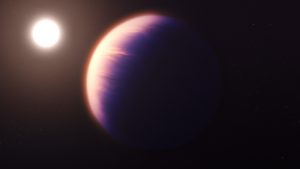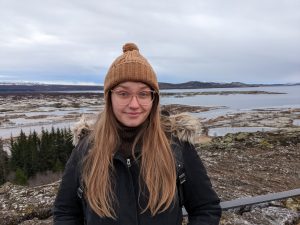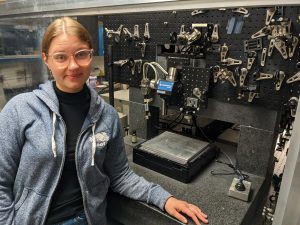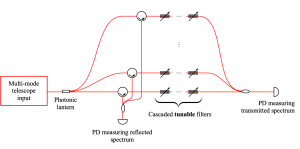Polina Zavyalova is a 4th year PhD student in the Department of Electrical and Computer Engineering, specializing in astrophotonics.
Photonics studies the interaction of light and matter. Instead of operating in free space, photonic devices confine and manipulate light in fibres and integrated optical circuits.
She is co-supervised by Professor Suresh Sivanandam (Astronomy and Astrophysics) and Professor Peter Herman (Electrical and Computer Engineering). Before her PhD, Polina completed her undergraduate degree in Physics at the University of Toronto.
How did you first become interested in Astronomy and Astrophysics?
I have always been puzzled by our ability to capture, let alone perform reliable science with photons arriving from distant astronomical sources. The working principles of astronomical instruments and telescopes are therefore incredibly interesting to me, and I have always wanted to get an opportunity to work on their design and fabrication.
Can you tell us a little bit about your specific field of research?
What’s the most exciting thing about your research?
The most exciting thing about my research is being in what I believe is the forefront of the development of astronomical instrumentation in the near future. I hope that many types of instruments which currently employ traditional optics will soon be supplemented or replaced by photonic devices. Since photonic instruments promise exceptional stability and high resolution at a low cost, I cannot wait to see the new scientific breakthroughs that come from the incorporation of more photonic technologies in astronomical instrumentation.
What do you hope will be your next step, professionally?
I am not yet sure which exact field I would like to end up in, but I know that I would like to continue experimental work in photonics and optics, be that in industry or academia.

One major target for an astrophotonic instrument like the one above is the detection of gases in atmospheres of remote exoplanets, such as WASP-39 b, illustrated here. Credit: NASA.
For more Grad Student of the Month profiles, visit: dunlap.utoronto.ca/2022-grad-student-of-the-month.
_________________________________________________________________________________________



